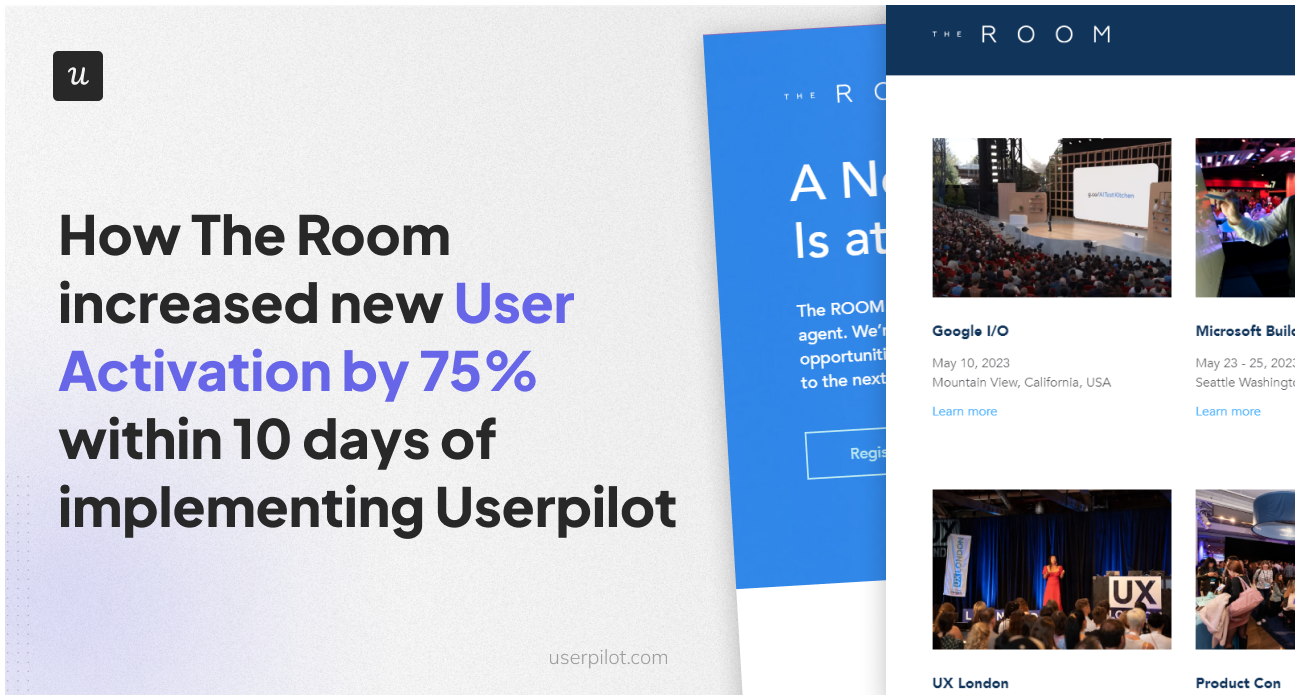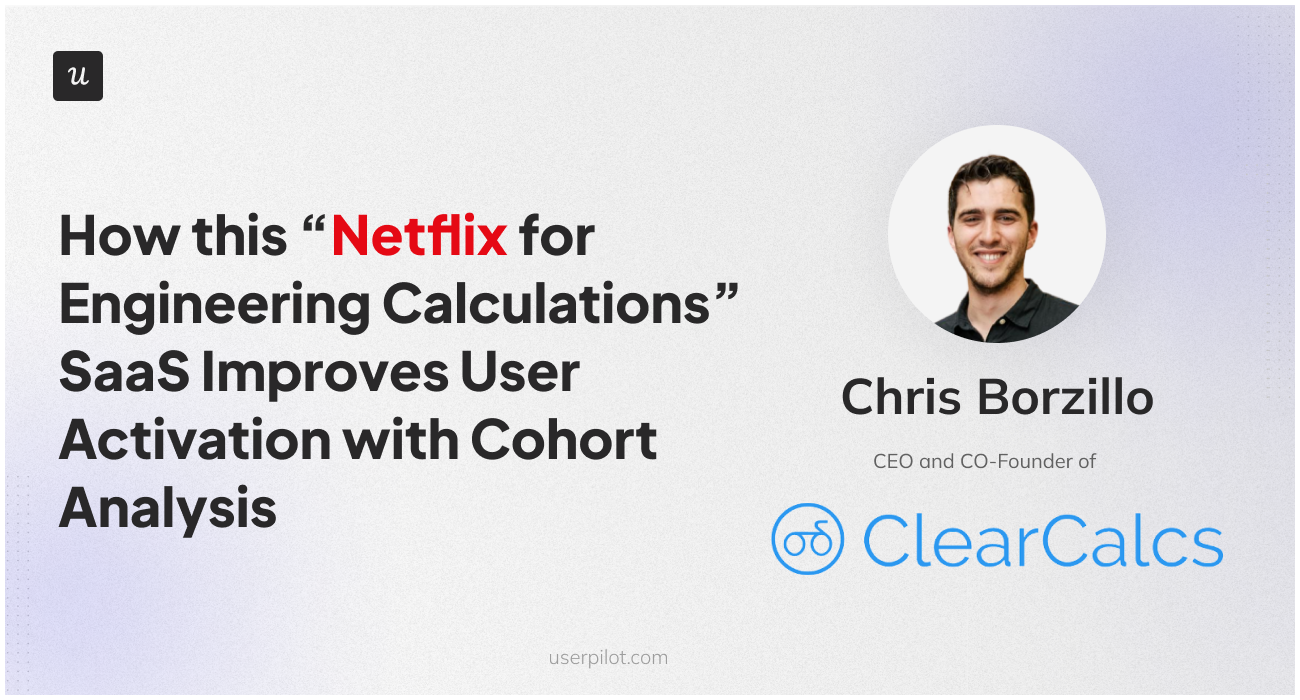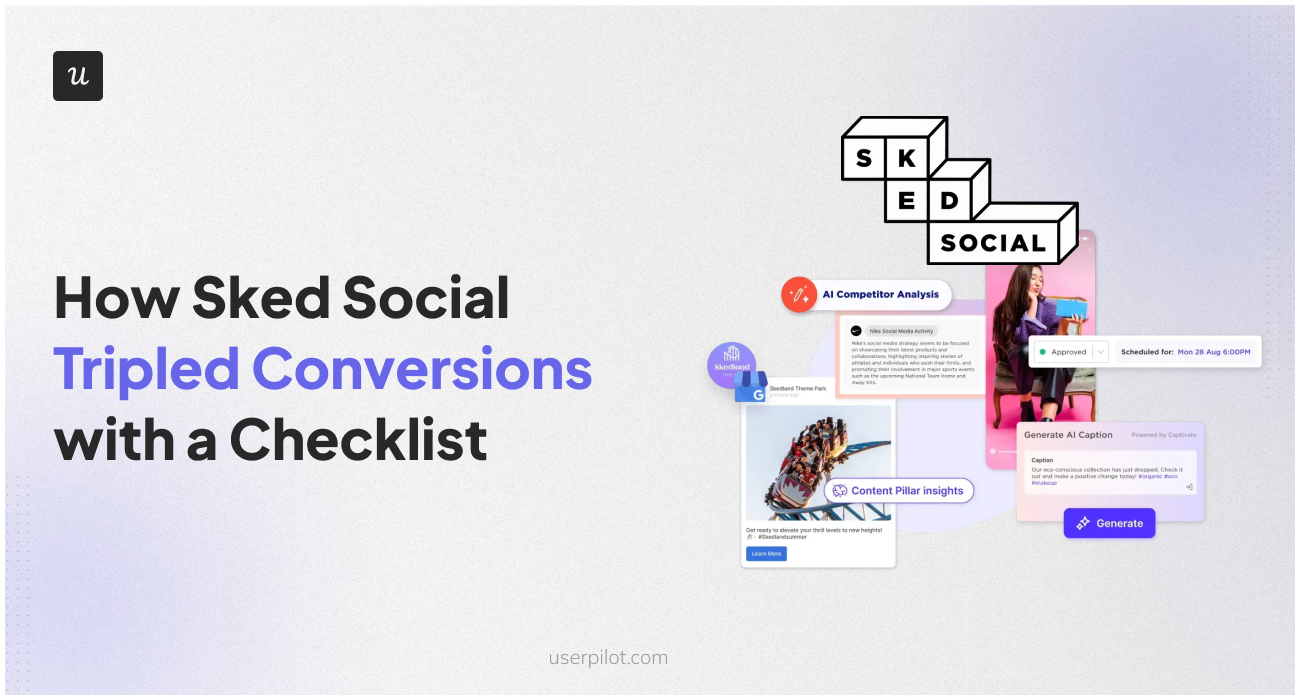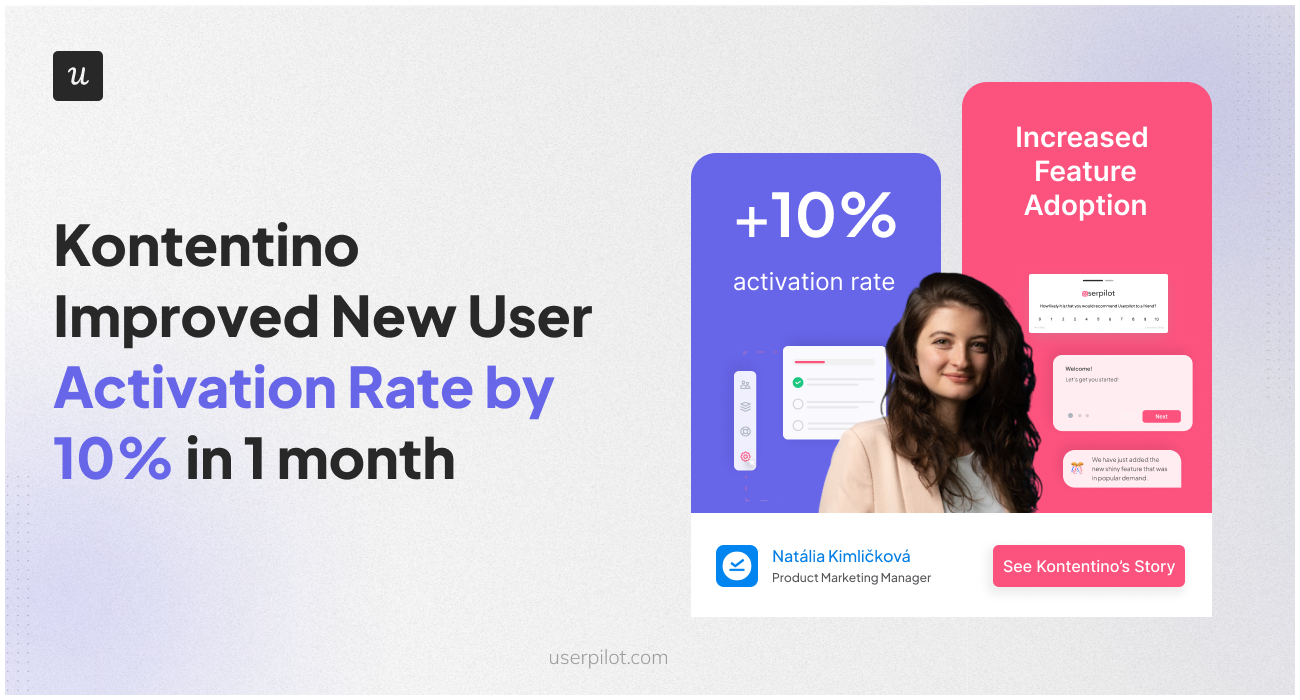10 Effective Strategies for Product Activation Rate Optimization

What does your product activation rate optimization look like? Is it something you do every week? Or not all? If you still need to start, here are ten strategies to begin with your product. If it’s something you already do, you may find some new techniques to try.
TL;DR
- Product activation rate measures users who are actively engaging with a product. The formula to calculate product activation rate is (The number of activated users / Total signups) × 100.
- A good activation rate is between 25% and 30%, with an average of 34% and higher rates in SaaS products.
- Product activation rate gauges onboarding effectiveness, boosts retention rates, and enhances experience.
- Optimizing product activation rates benefits from mapping the user journey.
- Gain user trust through social proof like customer testimonials and endorsements. They encourage signups and convert them into active users.
- Personalize the onboarding process by collecting user data. You can then segment customers and tailor their experiences.
- Use a personalized onboarding checklist with 2-5 key actions. You can tailor them to different segments to guide new customers through essential steps.
- Combine an onboarding checklist with interactive walkthroughs to teach users product features.
- Incorporate gamification into your product to enhance user engagement.
- Track feature usage and identify unused features for activation via analytics dashboards.
- Collect customer feedback to inform product improvements.
- A/B testing allows you to identify elements that most effectively engage users.
- Use the activation retention funnel to provide insights into the user’s progression.
- Attention Insight improved its activation rates by implementing Userpilot’s interactive onboarding flow and checklist.
- After implementing Userpilot’s onboarding flow, The Room saw a 75% increase in user activation.
- ClearCalcs improved customer activation rates using Userpilot for analysis and creating an in-app onboarding experience.
- Sked Social tripled its conversion rates by implementing a checklist.
- Kontentino achieved a 10% increase in user activation within a month By implementing interactive walkthroughs and checklists.
- Getcraft doubled its customer activation rate using Userpilot and Segment to create code-free in-app experiences.
- If you want to help increase your product activation rate using a no-code solution, book a demo with Userpilot.
What is a product activation rate?
The product activation rate measures the percentage of users who take a specific desired action within your product.
This could be anything from creating a profile, completing a tutorial, or purchasing.
It helps you understand how many users become active and engaged with your product.
What is a good activation rate?
What counts as a good activation rate? Generally, you’re on the right track if 25% to 30% of your users reach the activation milestone.
Let’s put this into perspective with some numbers. On average, the activation rate sits around 34%, with the median being 25%. But these figures can vary based on the type of product.
For example, the average activation rate in SaaS is higher at 36%, with the median at 30%. These numbers are a great benchmark to compare your product’s performance against.
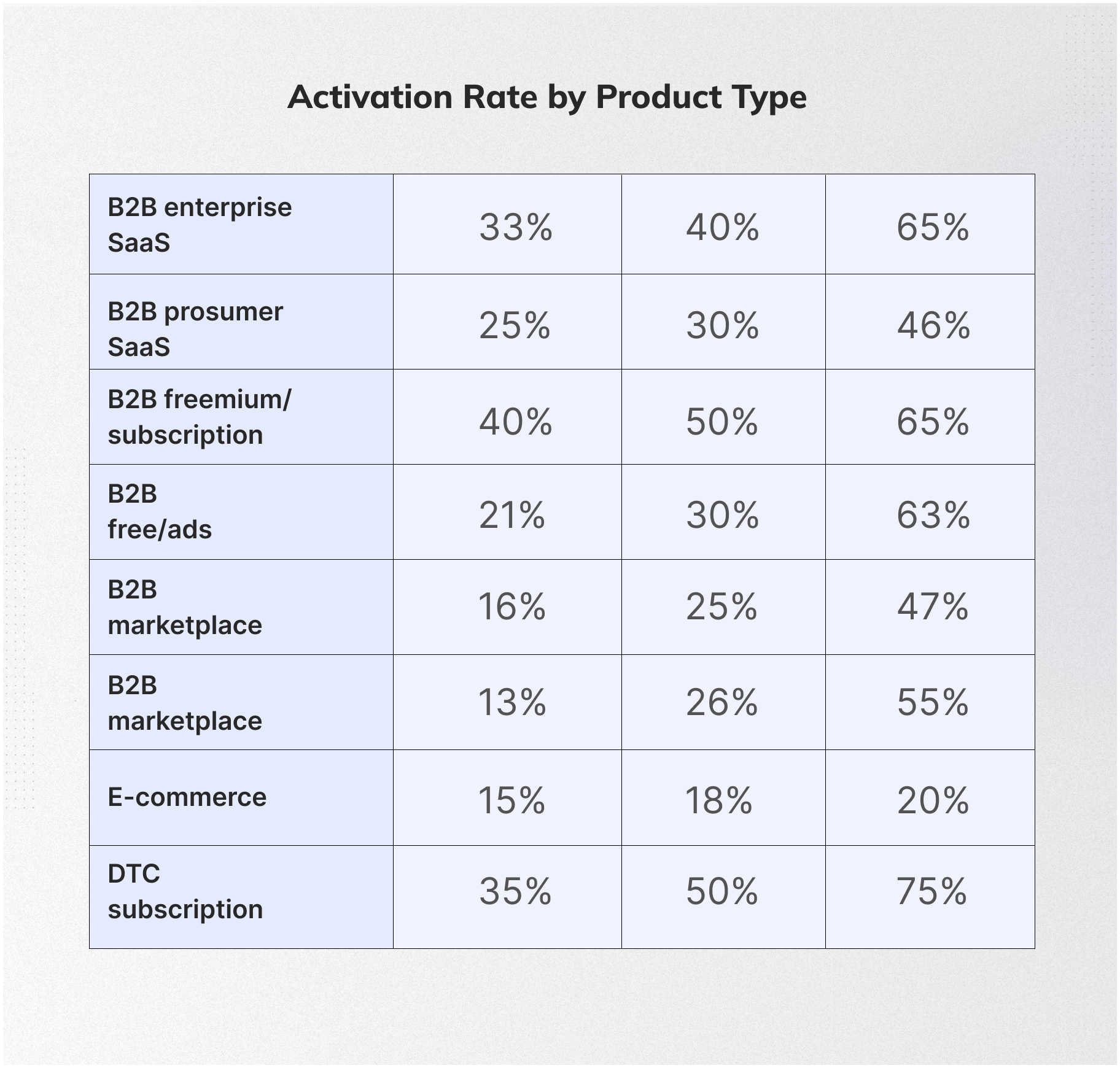
Activation rate by product type.
Why product activation rate is important in SaaS?
The product activation rate is more than a number – it’s a crucial indicator of your product’s health and success. Here’s why it’s so important:
- Measuring Onboarding Effectiveness: The activation rate reflects how well your onboarding process works. A high rate means new users find it easy and intuitive to use your product.
- Boosting Retention Rates: Activation is often the first step to user retention. Users who find value in your product are likelier to stick around. This is important in SaaS, where ongoing user engagement is key to long-term success.
- Enhancing Customer Experience and Engagement: A higher activation rate usually means your users have a positive experience. When they engage more with your product, it’s a sign of a well-designed SaaS product.
How do you measure product activation rate?
Measuring the product activation rate is essential for understanding how your product performance. The formula is simple:
Activation Rate = (The number of activated users / Total signups) × 100
Here’s how it works:
- Count the Activated Users: First, determine who your activated users are. These users have completed the key action or milestone you’ve defined as ‘activation’ for your product. This could be anything from completing a profile setup to making their first transaction
- Total Signups: This is the total number of users who have signed up for your product in a given period.
- Calculate the Rate: Divide the number of activated users by the total number of signups, and then multiply by 100 to get a percentage. This percentage is your product activation rate.
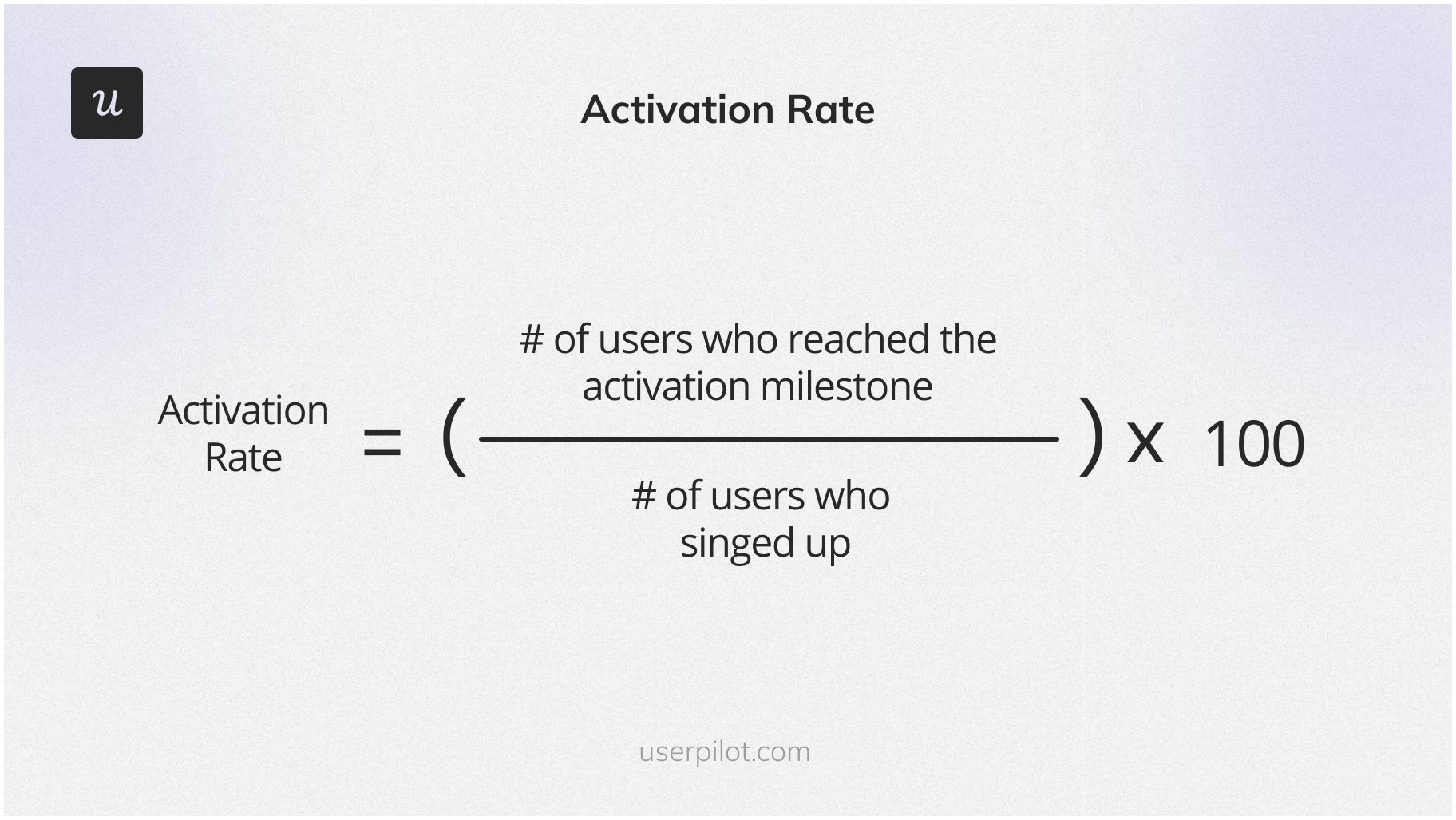
Activation rate formula.
How to optimize product activation rate for SaaS companies?
Optimizing the product activation rate helps for long-term success and customer satisfaction. Here are some methods for you to improve your activation rate for your SaaS.
Map out the user journey from free trial users to paying customers
Mapping out the user journey involves an understanding of every touchpoint. This is from the initial sign-up to the various interactions with the product.
During this mapping, it’s important to identify any friction point. This could be where users might encounter difficulties or lose interest. Recognizing these potential stumbling blocks allows you to address and smooth them out.
Integrating activation milestones into the user journey also helps mark key transition points, guiding users toward becoming paying customers.
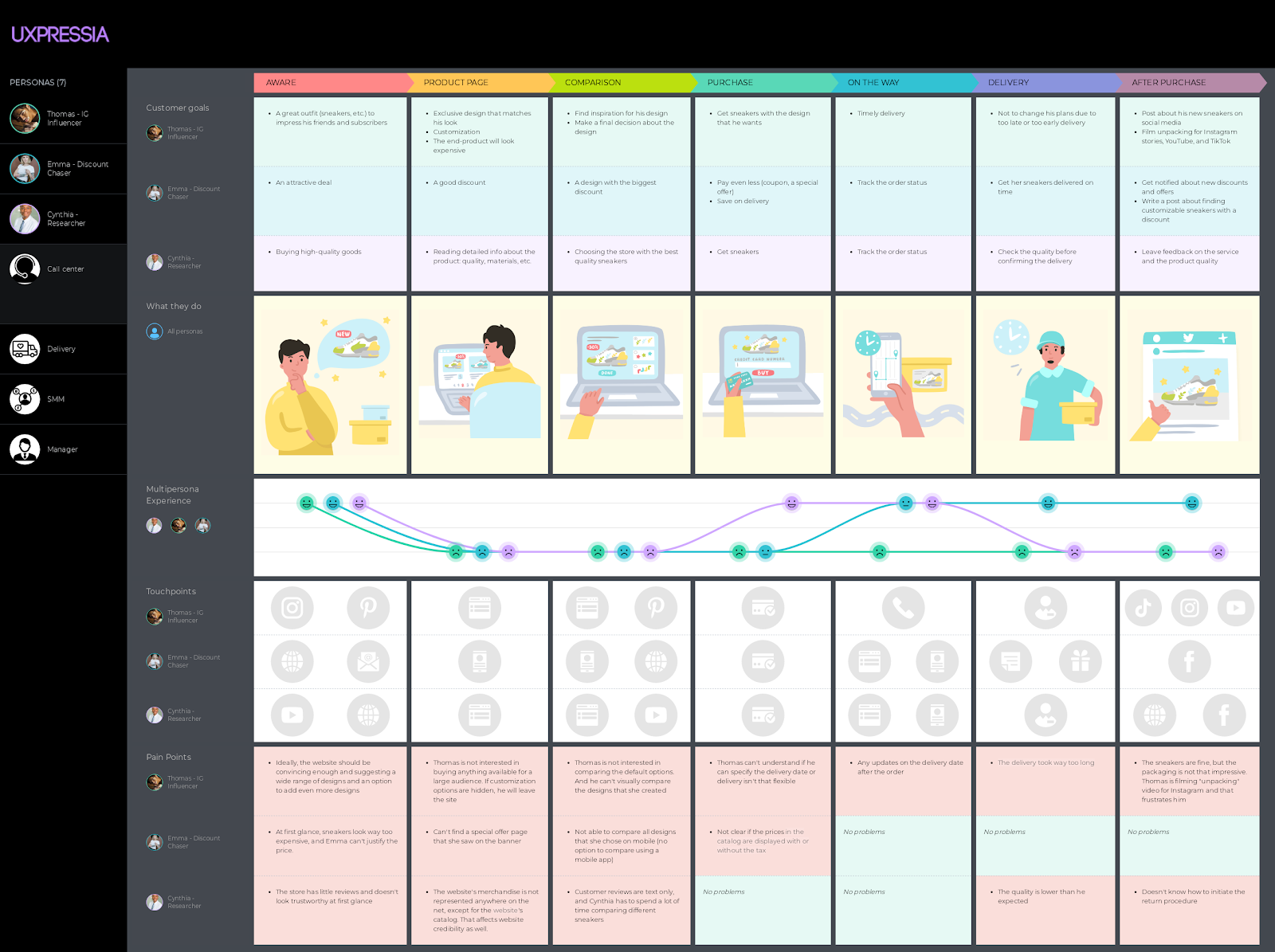
Customer journey mapping.
Add a social proof to your sign-up page to gain user trust
When new users land on your sign-up page, they often seek reassurance. This is where social proof becomes invaluable.
Social proof, such as testimonials, endorsements from well-known figures in the industry, or data showing the number of active users, can enhance trust. Users are more inclined to try out your product if they see others have had a positive experience.
This sense of trust not only encourages sign-ups but helps convert these sign-ups into active users.
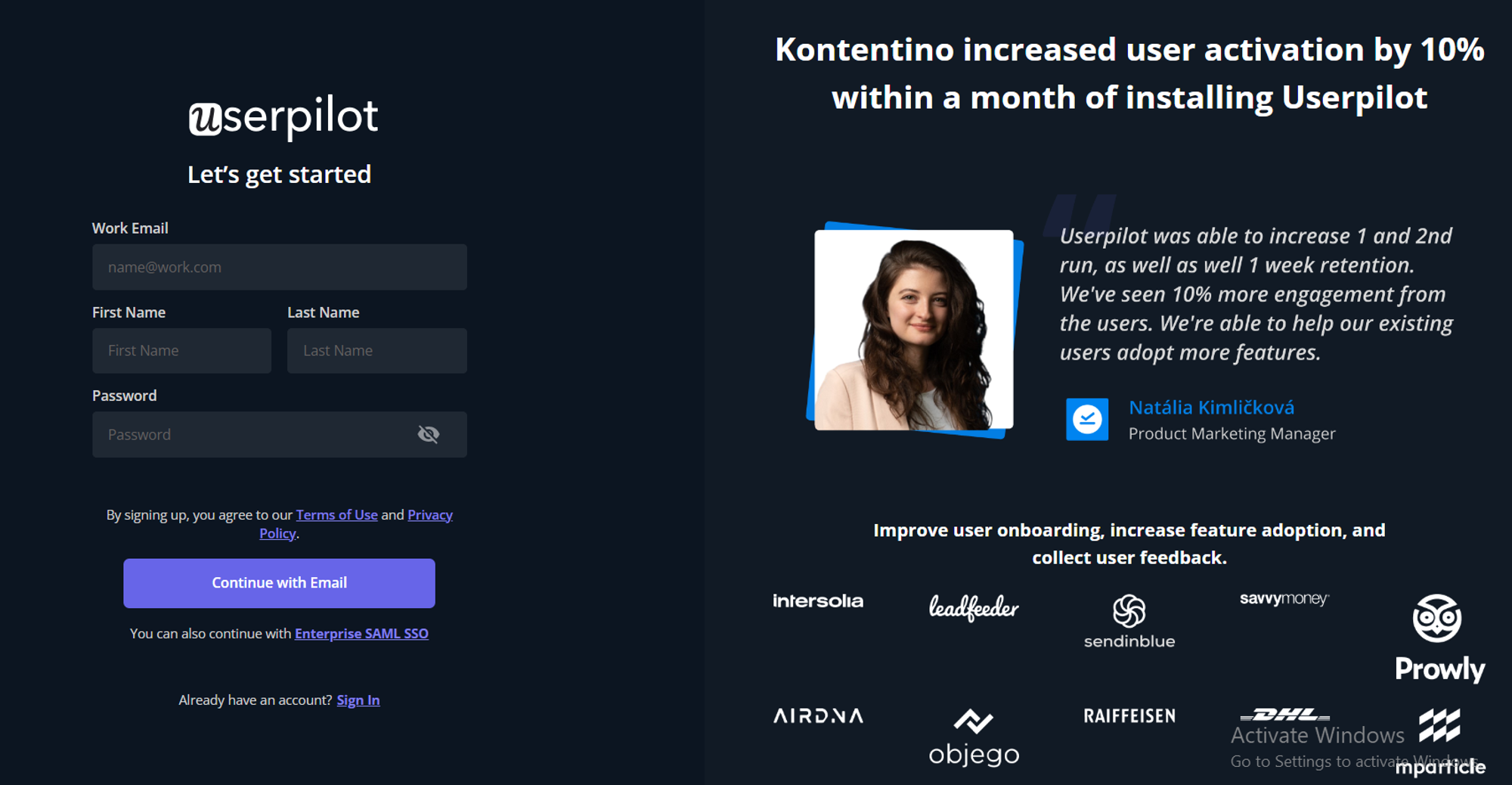
Social proof on Userpilot’s user sign up page.
Personalize the Onboarding Process for New Users
Personalizing the onboarding process starts by collecting data through a welcome survey. This helps you understand their goals and preferences.
Next, segment your customers based on this information. You should consider factors like their industry or specific challenges.
You can then use these segments to deliver experiences tailored to their ‘Jobs to Be Done‘ (JTBDs). Aligning your onboarding with users’ objectives ensures a relevant introduction to your product. All of which increases the activation likelihood.
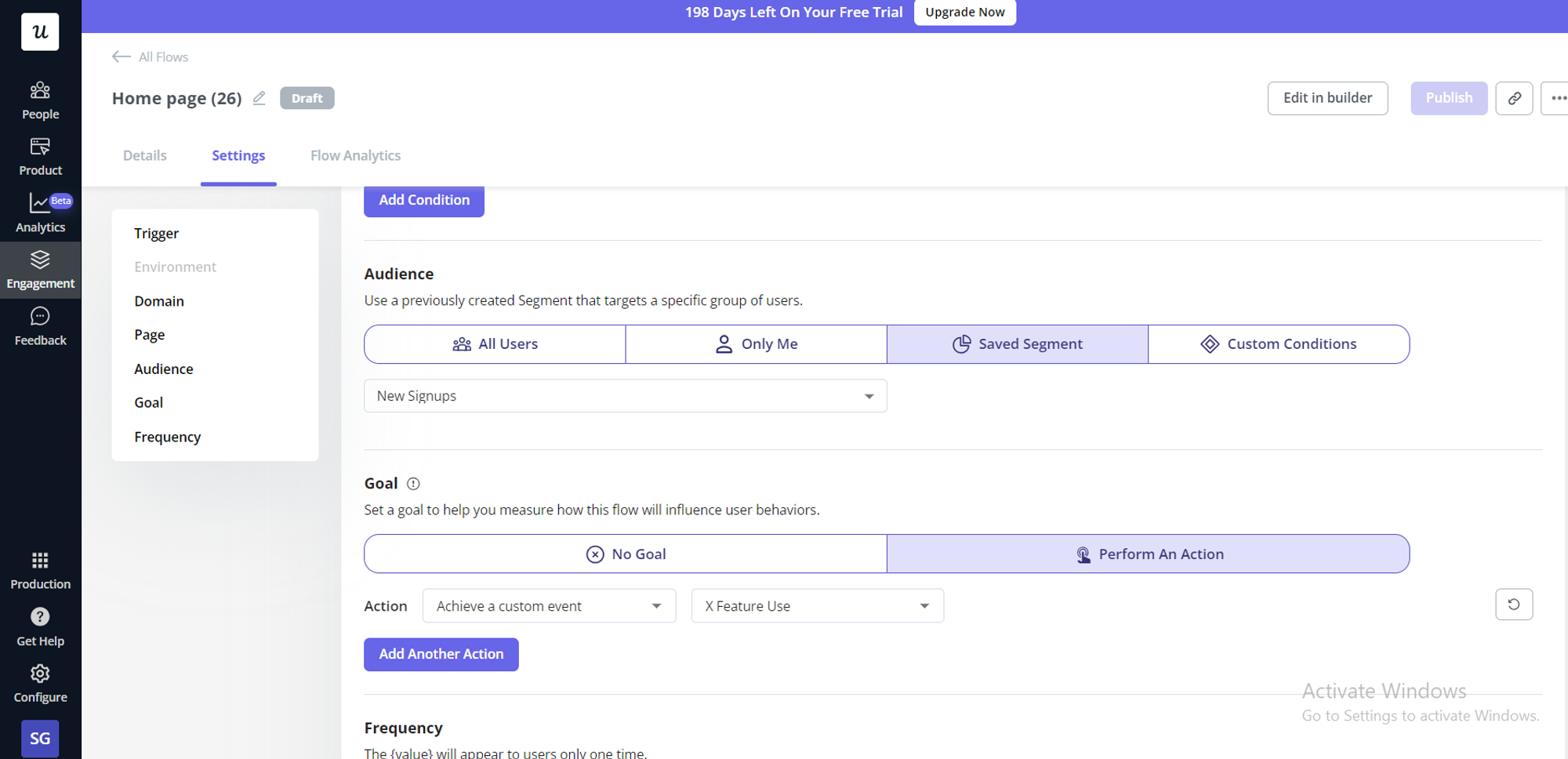
Personalize your onboarding process with Userpilot.
Use an onboarding checklist with key activation milestones
An effective strategy to optimize product activation rate is to use an onboarding checklist. This checklist should outline 2-5 key actions leading to activation.
It guides new users through the steps required to engage with your product.
The key is to personalize this checklist to cater to the needs and goals of different user segments. Doing this ensures that every user finds the most relevant and impactful actions.

Create a checklist with Userpilot.
Combine your checklist with interactive walkthroughs
It’s beneficial to combine your onboarding checklist with interactive walkthroughs. This approach involves triggering guides or tutorials from the items on the checklist.
Doing so provides users with a hands-on, engaging way to learn about and adopt your product.
Interactive walkthroughs make it easier for users to understand and use your product’s features. They offer step-by-step guidance, reducing confusion and enhancing the user experience.
This supports users in completing actions in the checklist and also encourages engagement. The integration of interactive walkthroughs with the checklist ensures users are not only reading about what to do but are also shown how to do it in an interactive and user-friendly manner.
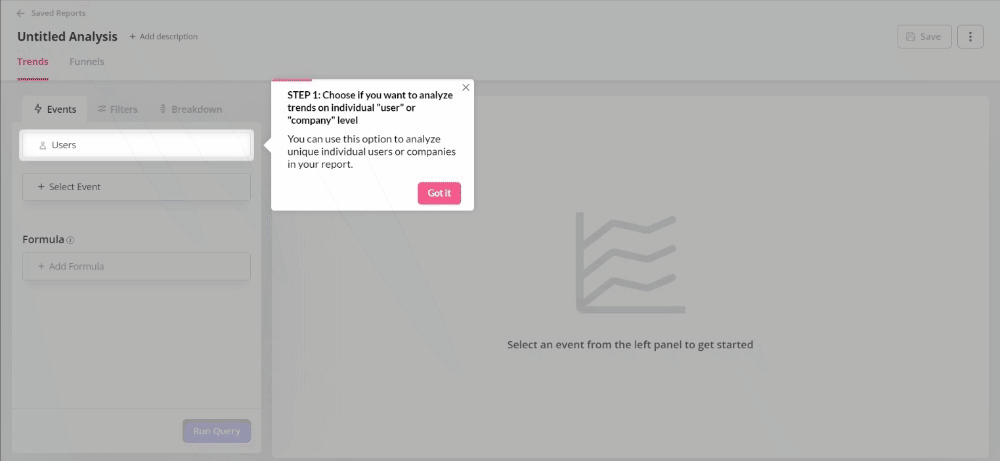
Create checklists and interactive walkthroughs with Userpilot.
Use gamification to engage and encourage users
Gamification can improve engagement, increasing the chances of users reaching activation milestones. Incorporating game-like elements into your product makes the user experience more enjoyable and engaging.
Engaged users are more likely to stick around. They delve deeper into your product, ultimately reaching the activation point.
An example of effective gamification is Asana’s approach. When users complete a task, a cartoon unicorn dashes across the page. This small, playful reward encourages further interaction and task completion.
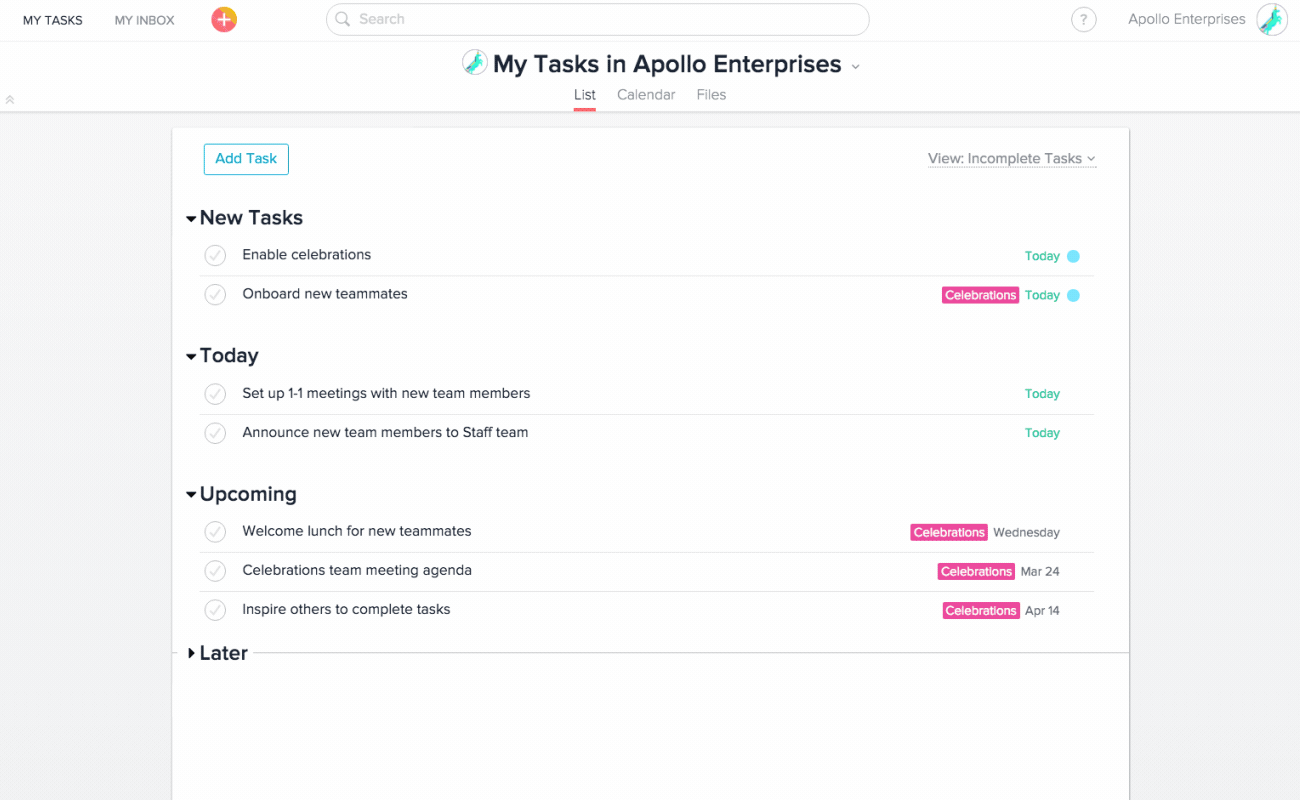
Gamification example from Asana.
Constantly monitor user behavior to identify and fix friction points
By closely monitoring how users interact with your product, you can gain insights into their engagement patterns. This involves tracking the most used features and identifying any necessary for activation that may be underutilized.
A product analytics dashboard is the best way to track these interactions. Such dashboards provide a view of user interactions. They allow you to observe trends, usage patterns, and potential friction points. You can then identify areas that may need improvement or simplification.
Addressing these issues ensures users have a smoother experience, leading to a better activation rate.
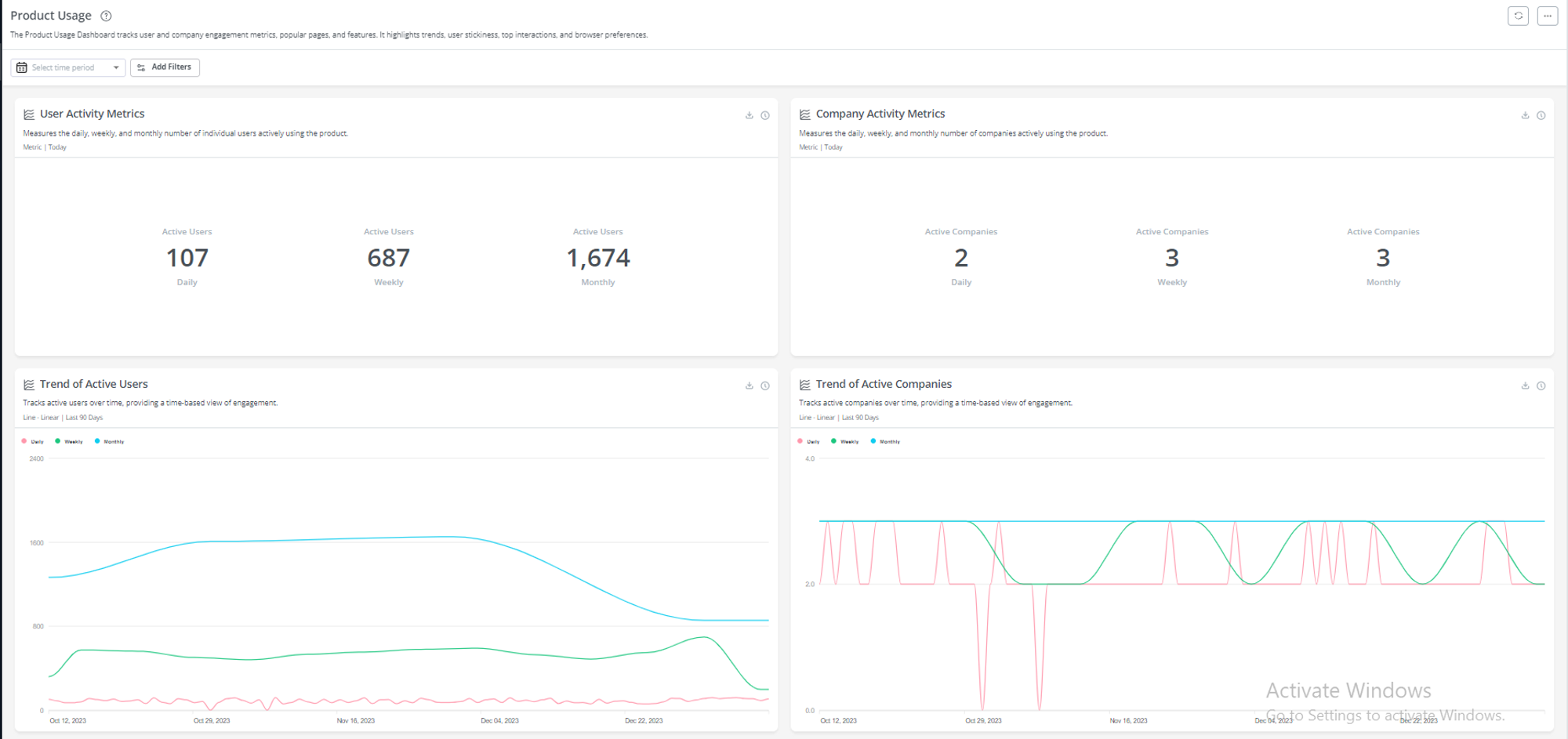
Get product analytics via Userpilot.
Collect customer feedback to measure and improve customer satisfaction
Seeking out feedback helps you understand what aspects are working well or need improvements. It’s important to not only collect this feedback but also to act on it. Addressing any issues and improving your product can enhance the user experience.
Moreover, following up with users after implementing changes demonstrates your commitment to their satisfaction. This follow-up can further build trust and loyalty, encouraging users to stay engaged with your product.
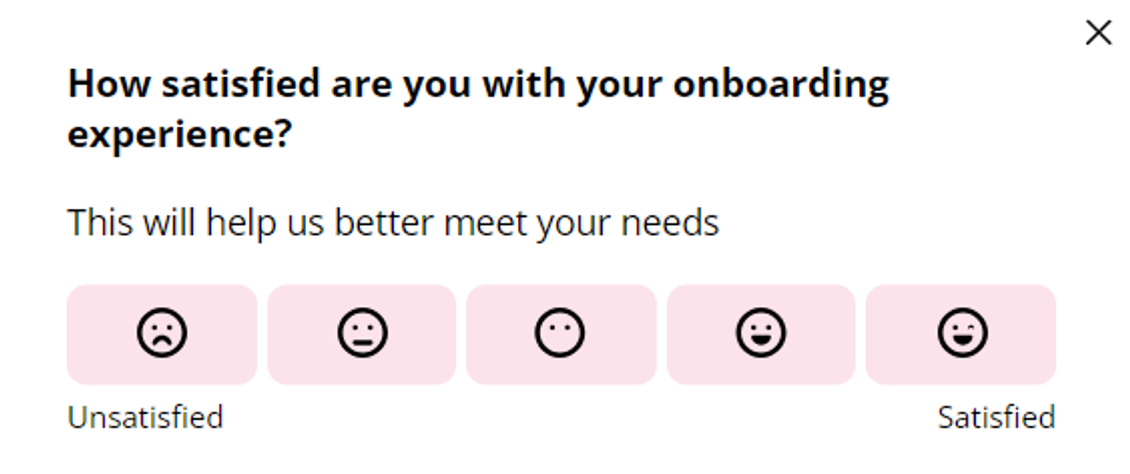
Collect customer feedback via Userpilot.
A/B test different flows to see which one results in higher activation rates
The importance of A/B testing lies in its ability to provide clear, data-driven insights. You can test variations in your onboarding process, features, or user journeys to see what resonates most.
For instance, you might have two versions of your sign-up page or onboarding tutorial. Through A/B testing, you can determine which version leads to more users reaching the activation milestone.
You better understand user preferences and behaviors by testing and analyzing different elements. This helps refine the user experience and ensures you make informed decisions based on user data.
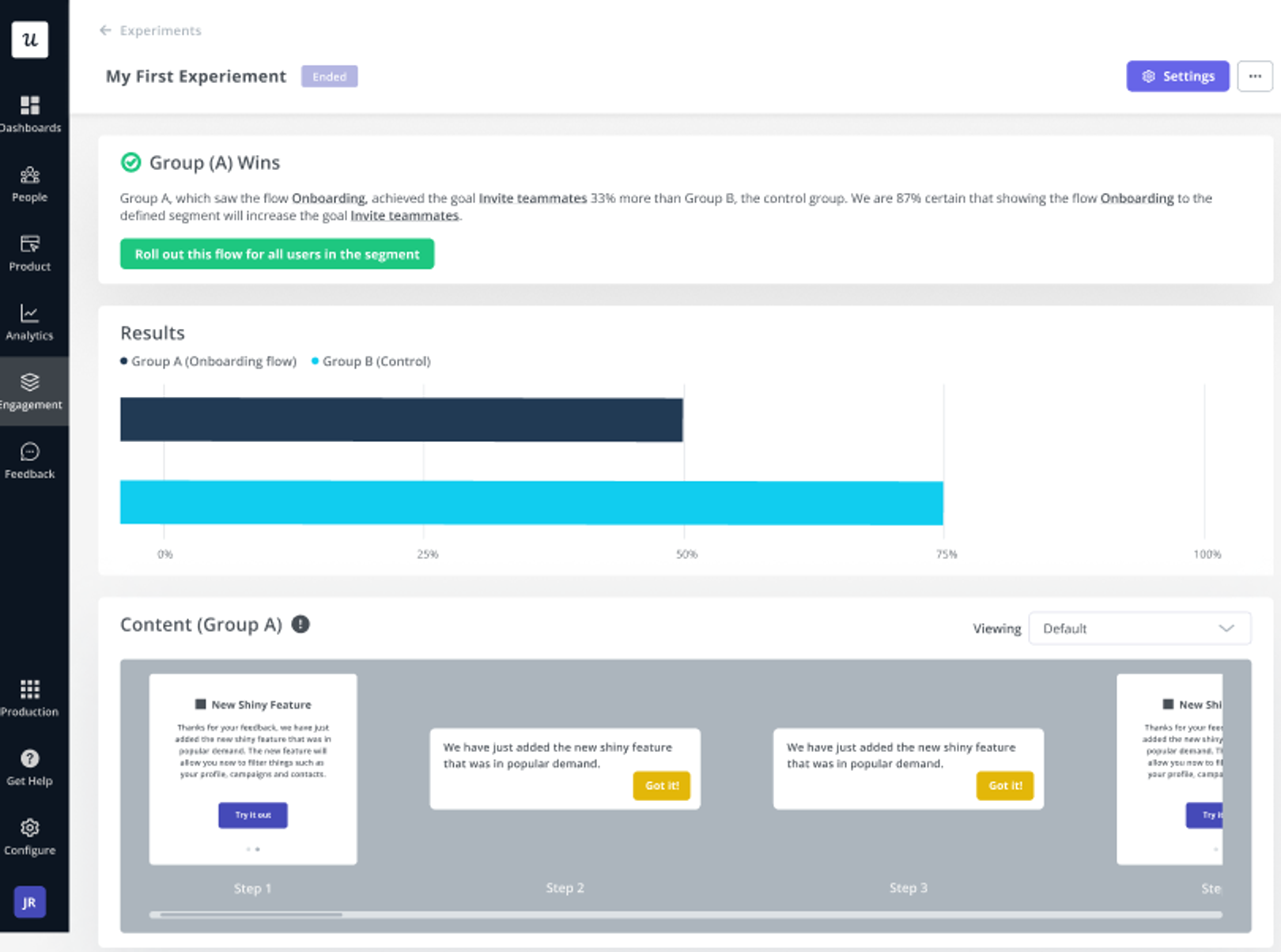
Conduct A/B testing with Userpilot.
Measure user activation rate with an activation retention funnel
Using an activation retention funnel helps to measure and increase user activation rates. Analytics play a crucial role in this process, providing deep insights into how users interact with your product.
The activation retention funnel helps track the progression of users from initial sign-up through various stages of engagement to eventual activation.
By analyzing this funnel, you can understand when users are dropping off. As well as the percentage that are reaching the activation milestones. This is particularly useful for observing how activation rates vary over different timelines.
By regularly monitoring and analyzing this data, you gain valuable insights into the effectiveness of your onboarding process and user engagement strategies. This ongoing analysis is vital for continually refining your approach to ensure higher activation rates and sustained user engagement.
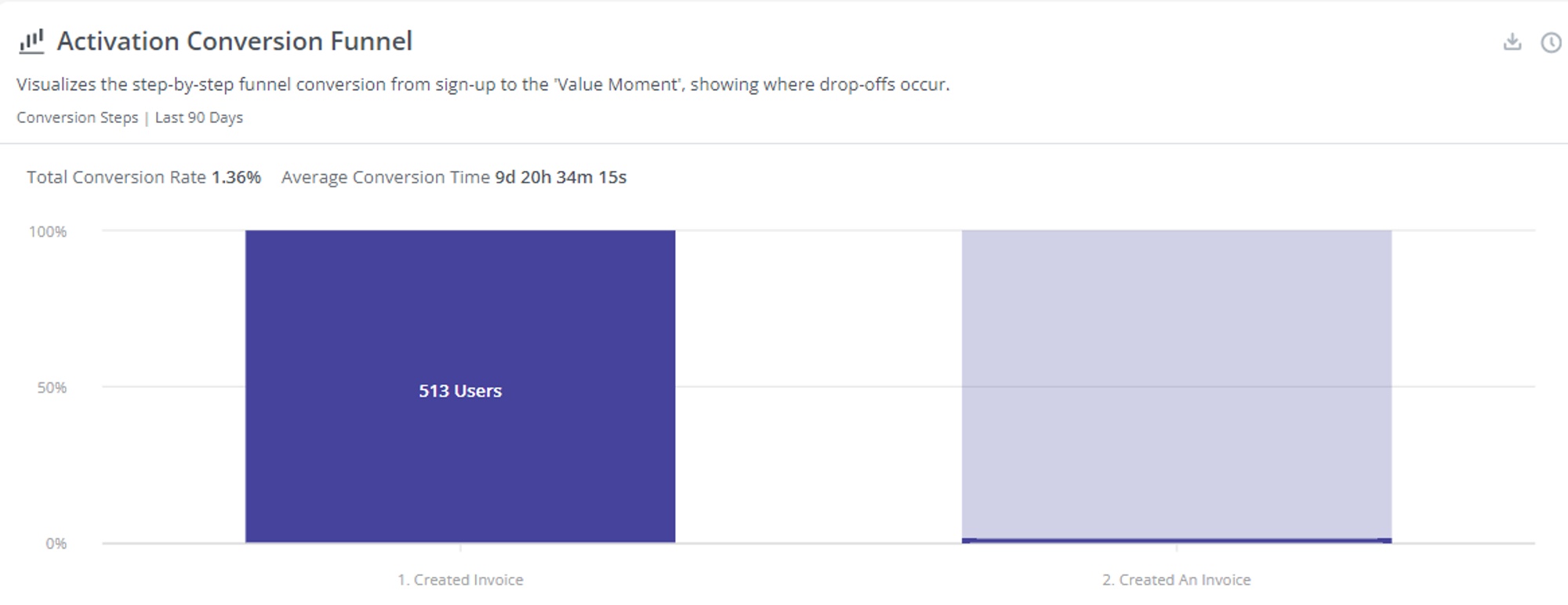
An activation conversion funnel.
Examples of successful high-activation businesses
This section delves into the success stories of SaaS companies that have mastered increasing their activation rates. These case studies showcase how adjustments can improve engagement and activating users.
How Attention Insight improved user activation by 47% with Userpilot’s interactive walkthroughs
Attention Insight, an AI-powered tool offering attention heatmap analysis, faced low user activation rates. To address this, they implemented Userpilot’s onboarding flow. This included interactive walkthroughs and an onboarding checklist.
This strategy led to a significant increase in user engagement with key features. The result was a 47% relative increase in users creating heatmap analyses. They also had an 83% increase in engagement with the ‘Areas of Interest’ feature, which is crucial for the product’s value realization.
How The Room increased new user activation by 75% within 10 days of implementing Userpilot
The Room, a platform connecting African tech talent with global companies, faced a challenge with new members not uploading their CVs, a key activation point.
Implementing Userpilot’s onboarding flow, which included a “driven action” UI pattern to encourage CV uploads, significantly increased user engagement.
Within ten days of using Userpilot, The Room saw CV uploads increase from 200-210 to 300-350 per week, marking a 75% increase in customer activation.
How ClearCalcs improved activation with Userpilot’s cohort analysis
ClearCalcs, the “Netflix for Engineering Calculations,” used Userpilot to improve customer activation rates through cohort analysis and bespoke in-app onboarding experiences.
They focused on making the discovery of relevant calculators easier for new users, enhancing their initial experience.
By segmenting users based on roles, goals, and company size, ClearCalcs personalized the onboarding flow for different user needs, thus improving user activation in each segment.
How Sked Social tripled activation rate and conversions with a checklist
Sked Social, a social media management platform, successfully tripled its conversion rates by incorporating an onboarding checklist into its user experience.
This checklist, containing four tasks, utilized psychological techniques like a progress bar and “endowed progress” (where one task is already checked off), guiding users through its product.
Users who completed the checklist were three times more likely to convert to paying customers than those who didn’t, highlighting the effectiveness of a well-structured and minimalistic onboarding process.
How Kontentino increased new user activation by 10% in the first month of using Userpilot
Kontentino, a social media management tool, achieved a 10% increase in user activation within the first month of using Userpilot. They focused on two main activation points: linking social media accounts and scheduling the first posts.
Implementing an interactive walkthrough and a checklist in Userpilot contributed to this success. Kontentino’s approach to user onboarding was interactive and engaging, guiding users through essential steps in a way that was both easy and enjoyable, leading to a notable improvement in user activation.
How Getcraft saved weeks of dev time and doubled their user activation rate with Segment and Userpilot
Getcraft, a premium creative network, doubled its user activation rate by integrating Userpilot and Segment. This integration allowed Getcraft to create in-app experiences without coding, saving weeks of development time.
They focused on enhancing user onboarding, especially completing profiles, which was a major challenge.
Introducing interactive walkthroughs and checklists led to a substantial increase in profile completion rates, from 20% to over 40%, and significantly reduced customer support inquiries.
Conclusion
Product activation rate optimization is an important task within your SaaS. Without it, you could miss out on stages that only need some fine-tuning to increase the rate.
Some of the tactics like checklists, conducting A/B tests, and collecting feedback can be done with Userpilot. And without any technical knowledge. Do you want to get started with product activation rate optimization? Get a Userpilot Demo.

